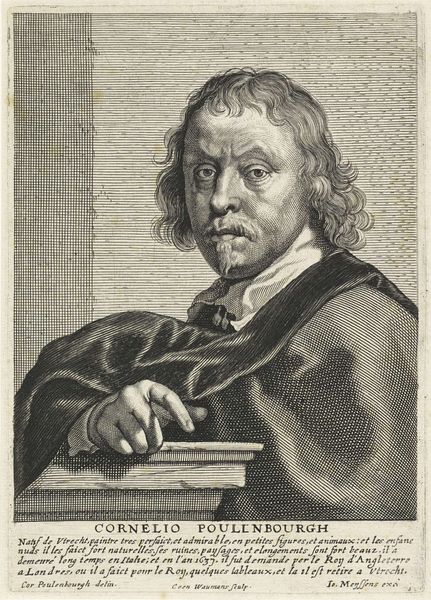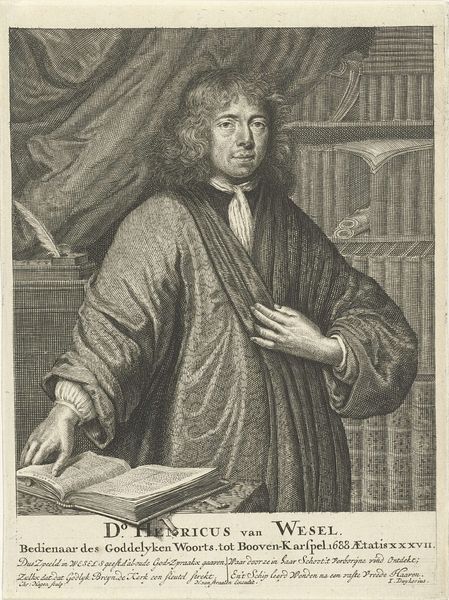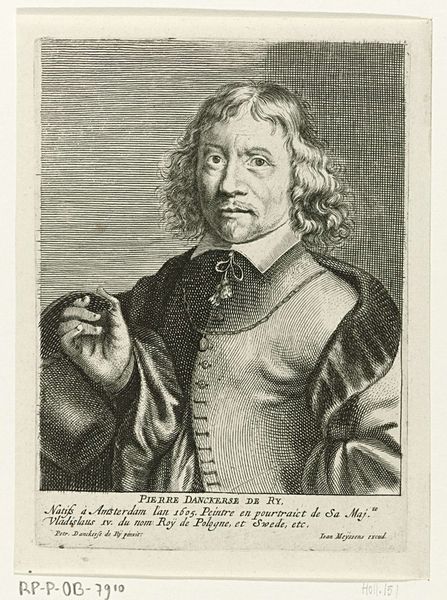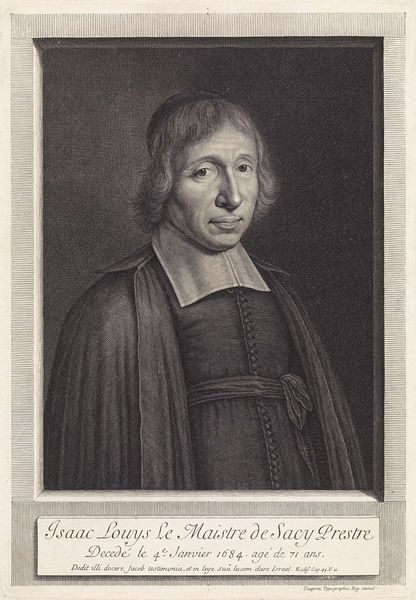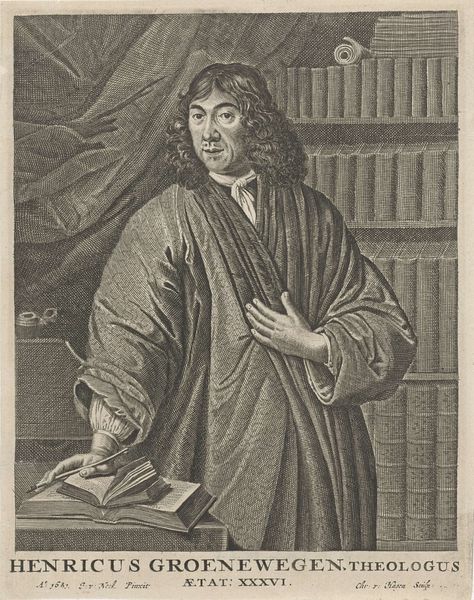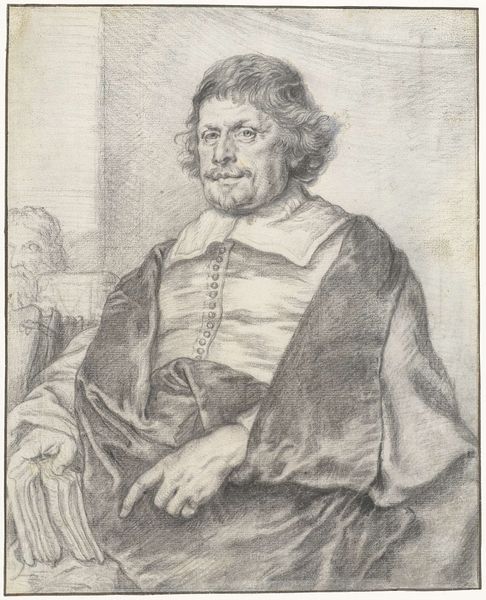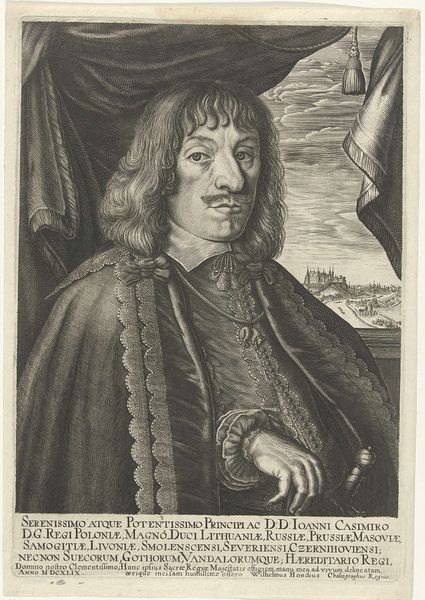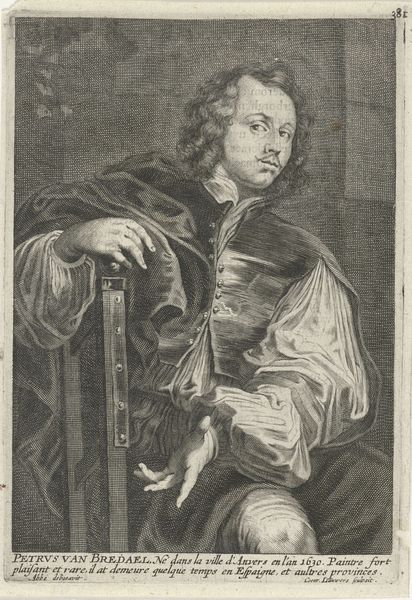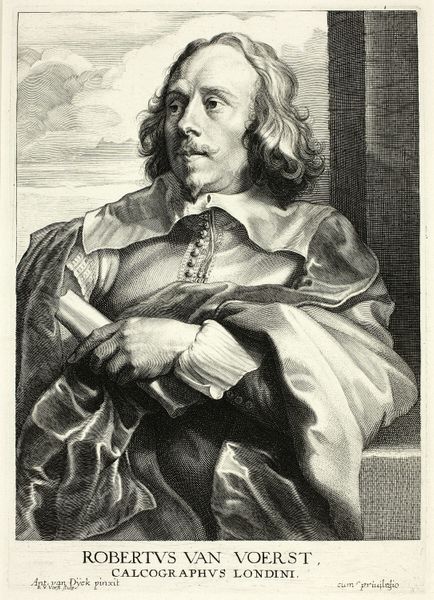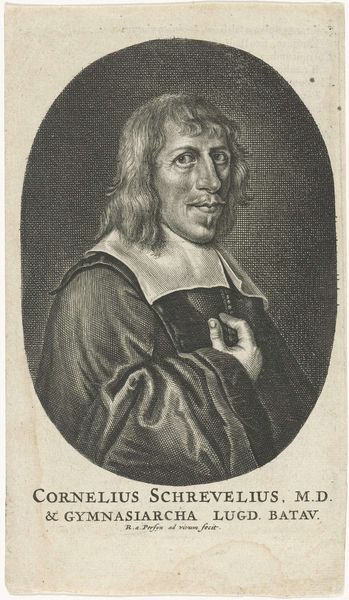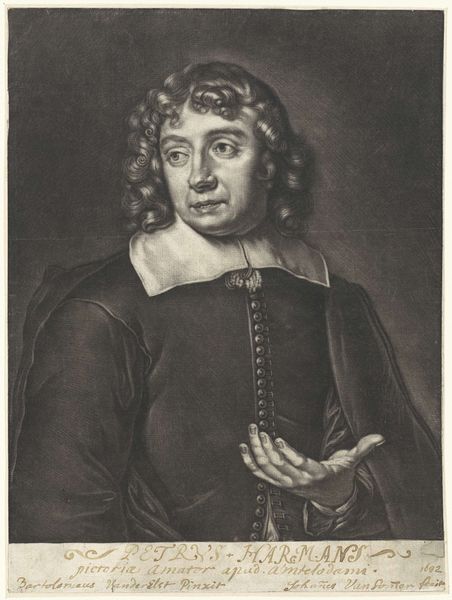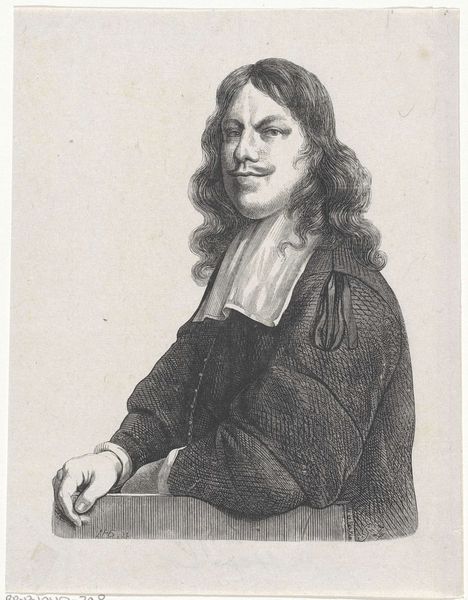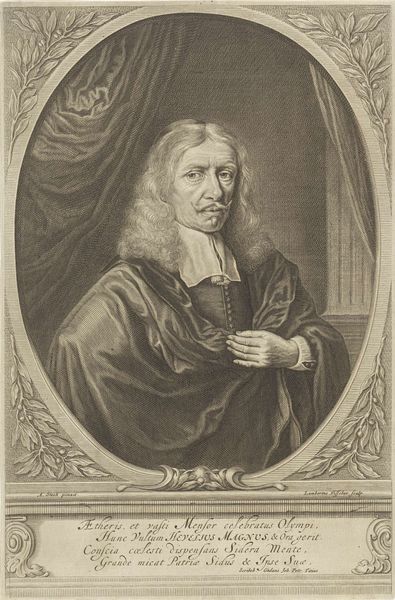
print, engraving
#
portrait
#
baroque
# print
#
engraving
Dimensions: height 260 mm, width 181 mm
Copyright: Rijks Museum: Open Domain
Curator: Standing before us is a rather compelling portrait, etched in the late 17th or early 18th century—sometime between 1664 and 1721, to be precise. It depicts Petrus van Staveren, an Amsterdam and Leiden pastor. The artwork is held here at the Rijksmuseum. Editor: It's immediately striking. The textures created through the engraving—particularly in the drape behind him and the subtle rendering of his robe—create an impressive visual richness. And that direct gaze... quite assertive. Curator: Indeed. This work fits squarely within the Baroque portrait tradition. What interests me, though, is its context. Printmaking had a vital role during this period in disseminating images, effectively building reputations and consolidating power within religious circles. This portrait likely served a similar purpose, reinforcing van Staveren's authority within his community. Editor: You know, focusing on the "how" here reveals another dimension. Think about the skill required to translate a likeness—likely from an earlier painting perhaps?—into the very precise lines of an engraving. The tools, the paper, the deliberate crafting... This wasn't mere replication; it was a meticulous act of material conversion, meant for wide circulation. The lines composing his garments speak of the textile trade itself—laborious efforts made accessible through skilled execution. Curator: And note how the text inscribed below the image names his civic and religious roles: this engraving publicly acknowledges his professional standing, underscoring a hierarchy maintained not just through piety, but tangible, publicly circulated imagery. The act of display becomes a form of institutional endorsement. Editor: The book he's holding—probably a bible—is also interesting. Its physicality, how his hand firmly rests on it, is telling. It's not just a symbol; it’s a physical object that underpins his social function and connects him to a lineage of material study and careful, physical engagement. Curator: It brings us to appreciate this artwork on multiple levels – not only as a representation, but as a vehicle within societal and religious systems of the period. Editor: A testament to how material culture shaped and perpetuated ideological and social order of its day. It’s remarkable, isn’t it, how the seemingly simple act of printing a portrait opens up these complex threads of understanding?
Comments
No comments
Be the first to comment and join the conversation on the ultimate creative platform.
